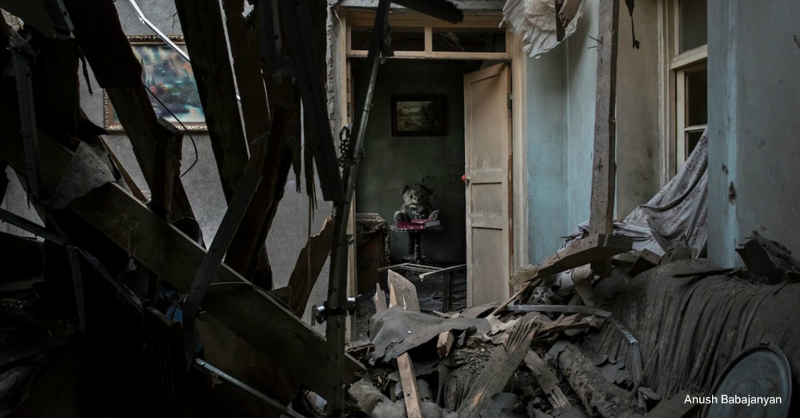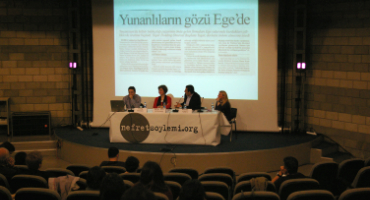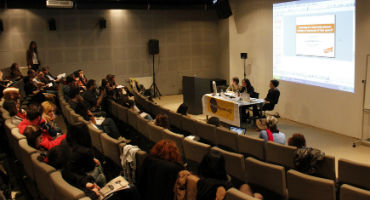On the first anniversary of the conflict between Azerbaijan and Armenia over Nagorno-Karabakh on April 2-5, 2016, the report titled Four Day War in Nagorno-Karabakh and the Discriminatory Discourse Analysis of the Media in Azerbaijan, Armenia and Turkey has been issued with the collaboration of Hrant Dink Foundation and Imagine Center for Conflict Transformation. In the report, the coverage of the conflict along Karabakh border by the media in Azerbaijan, Armenia and Turkey was examined.
The study aims to examine the media of three countries comparatively and to analyze what is highlighted and what is ignored while producing the news items concerning the issue and how the conflicting parties are named. In sum, the purpose is to analyze how media produces discriminatory discourse in times of conflict and war, and to what extent they contribute to the peace discourse.
For this purpose, media outlets to be examined in the three countries were selected first considering various criteria of representation. While investigating print media in Turkey, considering the specific features of each country and the weight of print and online media, online newspapers were taken into account in Azerbaijan and Armenia. Accordingly; the online newspapers Report.az, azadliq.org, Trend.az and Meydan.tv in Azerbaijan; Armenpress, Razm.info, Hetq and Azatutyun in Armenia; and newspapers Hürriyet, Sabah and Sözcü in Turkey had been examined.
Considering that media may not be covering the events on the same dates in every country, the periods to be examined were determined in accordance with the peculiar situation of each country. Thus, the coverage of the above-mentioned media outlets on April 2-5 in Azerbaijan, April 2-6 in Armenia and April 3-7 in Turkey were included in the analysis.
The data obtained from the analysis that was made in accordance with the aforementioned criteria in the media of Azerbaijan, Armenia and Turkey reveal that the way the ‘other’ is defined or the way the discriminatory discourse is generated is similar, even when the contexts are different.
Comparing the country reports, the most notable finding is that the psychological war carried out by the number of casualties (soldier or civilian) is regenerated in the media of all three countries. While the humane aspect of war is ignored, the media becomes an agent in the political conflict that takes place through these quantitative data. Such discourses support the militarist language and reinforce the war discourse. Finally, it was seen that Azerbaijani, Armenian or Turkish identities were directly targeted and some statements that clearly portrays other parties as enemies amounting to hate speech were found in the newspapers of all three countries within the related period.
About the Media Watch on Hate Speech project
The overarching aim of the study ‘Media Watch on Hate Speech’, which has been carried out by the Hrant Dink Foundation since 2009, is to contribute to combating racism, discrimination and intolerance in Turkey. Taking into account the importance of civilian oversight on the media, as one of the instruments for producing and reproducing racism, discrimination, and alienation; the specific goal of this study is to foster newspapers’ respect for human Rights and differences, draw attention to the discriminatory language and hate speech targeted towards people and groups about their certain identity characteristics; and thereby raise awareness.
As part of the study carried out by the Foundation to achieve the abovementioned goals, the national and local press are monitored and news stories and opinion columns that feature discriminatory, alienating and target-making discourse are identified, analyzed and brought to public attention through reports.
As of 2013, case studies for discriminatory discourse have been included in this systematic media monitoring study. A different issue on the public agenda is scrutinized every four months and a specific research methodology is developed for the topic to conduct a discriminatory discourse analysis. The aim of these analyses is to examine more indirectly constructed discourses that voiced discriminatory messages more implicitly than hate speech. Thematic subjects of discriminatory discourse reports published so far are as follows:
- Black Sea Visit of HDK and BDP Representatives
- Discriminatory Discourse of the Print Media in the Coverage of Gezi Park Protests
- The Alevi File: Not Explicitly Negative News, But Still Discriminatory
- The Armenian Genocide Remembrance Day One Year Left to the 100th Commemoration
- The Operation Israel Launched against Gaza and Discriminatory Language towards Jews in Media
- Discriminatory Discourse against Syrian Refugees in Local and National Press
- April 24 Armenian Genocide Remembrance Day in Print Media 1995-2015





